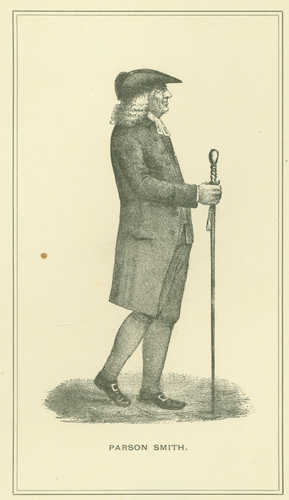Keywords: Colonial Maine
Item 18634
Contributed by: Jesup Memorial Library Date: circa 1925 Location: Bar Harbor Media: Photographic print
Item 20301
Society of Colonial Wars, Portland, 1903
Contributed by: Maine Historical Society Date: 1903-06-26 Location: Portland Media: Photographic print
Item 37131
7 Colonial Road, Portland, 1924
Owner in 1924: Harry C Libby Use: Dwelling - Single family
Item 37139
23 Colonial Road, Portland, 1924
Owner in 1924: Perley W Stevens Use: Dwelling - Two family
Item 150962
Alterations to New Jerusalem Church, High St. for C.B. Dalton, Portland, ca. 1903
Contributed by: Maine Historical Society Date: circa 1904 Location: Portland Client: Charles B. Dalton Architect: Frederick A. Tompson
Item 151559
House for Henry Lewis, Portland, 1913-1947
Contributed by: Maine Historical Society Date: 1913–1947 Location: Portland; Portland; Cape Elizabeth Client: Henry Lewis Architect: John Calvin Stevens and John Howard Stevens Architects
Exhibit
George Popham and a group of fellow Englishmen arrived at the mouth of the Kennebec River, hoping to trade with Native Americans, find gold and other valuable minerals, and discover a Northwest passage. In 18 months, the fledgling colony was gone.
Exhibit
Colonial Cartography: The Plymouth Company Maps
The Plymouth Company (1749-1816) managed one of the very early land grants in Maine along the Kennebec River. The maps from the Plymouth Company's collection of records constitute some of the earliest cartographic works of colonial America.
Site Page
"Women in Colonial Economies The work of Hallowell, Maine resident Martha Ballard (1735-1812) exemplifies female settlers’ varied and extensive…"
Site Page
"Like other British colonies, Massachusetts, including the district of Maine, derived its legal system from its mother country."
Story
How Belfast was the Chicken Capital of the Northeast
by Ralph Chavis
My memories of spending time in Belfast as a child when my father worked in the chicken industry.
Story
A Note from a Maine-American
by William Dow Turner
With 7 generations before statehood, and 5 generations since, Maine DNA carries on.
Lesson Plan
Grade Level: 6-8, 9-12, Postsecondary
Content Area: Science & Engineering, Social Studies
This lesson presents an overview of the history of the fur trade in Maine with a focus on the 17th and 18th centuries, on how fashion influenced that trade, and how that trade impacted Indigenous peoples and the environment.
Lesson Plan
What Remains: Learning about Maine Populations through Burial Customs
Grade Level: 6-8
Content Area: English Language Arts, Social Studies, Visual & Performing Arts
This lesson plan will give students an overview of how burial sites and gravestone material culture can assist historians and archaeologists in discovering information about people and migration over time. Students will learn how new scholarship can help to dispel harmful archaeological myths, look into the roles of religion and ethnicity in early Maine and New England immigrant and colonial settlements, and discover how to track changes in population and social values from the 1600s to early 1900s based on gravestone iconography and epitaphs.






















